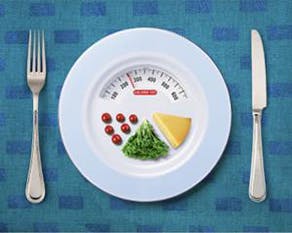Walking for fitness? Make it count with a pedometer
HEALTH & WELLNESS
10.21.2014

Walking can help pave the way to fitness. But are you taking enough steps to get results? Using a pedometer can help you set and achieve fitness goals. A pedometer can offer motivation and accountability. See how to choose and use a pedometer — it can be a powerful reminder that every step counts on the path toward better health.
Choosing a pedometer
A pedometer is a device that senses your movement to tally up the number of steps you take. A pedometer counts steps for any activity that involves step-like movement, including walking, running, stair climbing, cross-country skiing and even movement as you go about your daily chores.
To use a pedometer, you usually just clip it onto the waistband of your pants, tuck it inside your pocket or even slip it into a purse held close to your body — and then get moving.
But how do you know which kind of pedometer to get? Review these features to see what pedometer may best suit your needs and interests.
Ease of use. Some pedometers have more features and require more setup than do others. For instance, before first using your pedometer, you may have to program the date and time, your weight, or calculate and input the length of your stride. With other pedometers, you just clip it on and go, resetting the steps to zero each day when you start over.
Extras. Some pedometers do nothing more than count your steps. Others can calculate time spent in an activity, distance walked and even the number of calories your burn up while being active. Still others allow you to upload your data to computers so that you can electronically track your progress.
Accuracy. Most pedometers are generally accurate and reliable at counting basic steps. It's harder for pedometers to accurately measure actual distance you walk or run and harder still to estimate calories burned. The type of waistband your pants have, your speed and even your waist size also can affect pedometer accuracy. Check the manufacturer's instructions to achieve optimal accuracy for your pedometer.
Display. Look for a pedometer with a display monitor that you can read in different types of lighting, especially if you'll be using it both indoors and outdoors.
Comfort. Choose a pedometer that fits well with the type of clothing you usually wear. Consider the size and weight of the pedometer. Most pedometers are small, so you're not likely to notice them as you walk or work out.
Sturdiness. Look for a sturdy clip to secure the pedometer to your waistband. A pedometer may also have a strap to hold it in place and prevent it from being lost if it becomes unclipped.
Price. The cost of a pedometer typically depends on how many features it offers. Pedometer price generally ranges from $10 to $50. You can buy a pedometer at fitness stores or online.
Mobile devices. If you're into gadgets and technology, you can use a pedometer application for your smart phone or other mobile device. These applications (or apps) can count steps, distance and calories, much like a traditional pedometer. Prices vary, with some basic apps being free.
Setting and reaching step goals with a pedometer
A pedometer provides customized feedback about your activity level. It can serve as a strong motivator to keep moving. And it can help you track your progress over time.
Use these tips to make your pedometer a partner in your activity program:
Establish your baseline steps. When you first get your pedometer, wear it throughout the day for three straight days as you go about your routine activities at home or work. Add up the total number of steps for each of the three days and then divide that total by three. This gives you a baseline number of steps, or average, that can serve as a launching point for the step goals you set.
Set short-term step goals. Once you know how many steps you generally take on an average day, you can set some short-term activity goals using your pedometer. For instance, say you normally take about 2,000 steps a day while going about your normal routine. Set a short-term goal of adding on another 500 to 1,000 steps a day for a week by incorporating a planned walking program into your schedule. You can either do it all at once or break your walking into 10-minute chunks of time to accommodate your schedule. When you meet a short-term goal, add a new one.
Set long-term step goals. Think about your overall fitness and activity goals. Your short-term goals are the building blocks to these long-term goals. A long-term goal may be walking 10,000 steps a day, or about five miles (eight kilometers), several times a week as part of your new daily routine. You may also want to set a goal of walking faster as your fitness level improves. Keep in mind that the Department of Health and Human Services recommends that, in general, healthy adults get at least 150 minutes a week of moderate aerobic activity or 75 minutes a week of vigorous aerobic activity.
Track your progress. To see how you're doing, monitor your progress over time. Your pedometer may or may not have a memory function to track your steps on a weekly or monthly basis. You can choose to use that feature or record your steps in a log of your own making. Or upload the information digitally to your computer or mobile device. Tracking your progress can help you see whether you're meeting your goals and when it may be time to set fresh goals.
Remember to talk to your doctor before starting a new fitness program if you have any health issues, have been inactive or are very overweight. Whatever your fitness goals, take them one step at a time. Use your pedometer to set and track realistic goals based on your fitness level and any health issues you may have. Use your pedometer to keep it fun, interesting and challenging. Better health and fitness may be just steps away.
Image Credits: AlexMaster/Shutterstock.com
Recommended Articles
The 5 Best Foods That Will Help Supercharge Your Brain
Amidst our busy schedule, it's important to retain our focus and memory. Resting alone is not...
Iron deficiency is a lot more common than you would think. A recent survey by SATA CommHealth(i...
Mars vs Venus: Understanding the His and Hers of Nutritional Needs
Mars vs Venus: Understanding the His and Hers of Nutritional Gaps Although their DNAs are...






